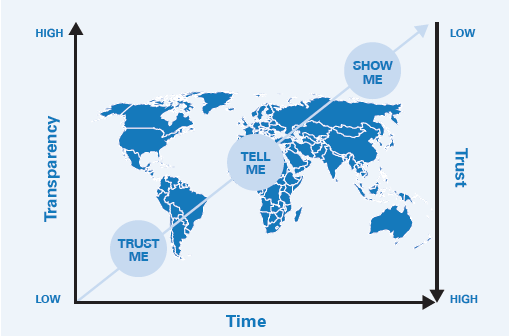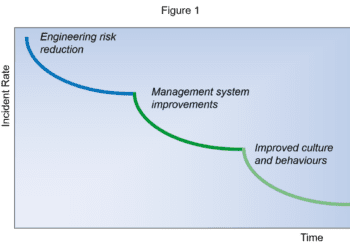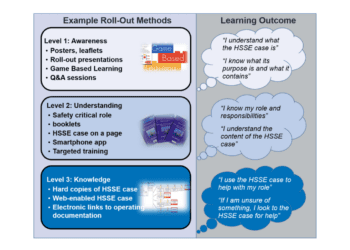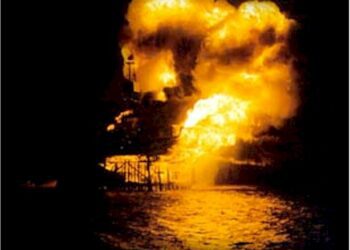The Evolution of Safety Culture
The term safety culture was introduced by the International Atomic Energy Agency (IAEA) following the nuclear reactor accident at Chernobyl in 1986. In the aftermath, people began to understand that the underlying reasons for accidents were not only technical faults or individual human errors, but that an organisation’s shared values and beliefs interact with its structures and control systems to heavily influence safety behaviours. Today, a safety culture is very high up the agenda of the corporate board. So, how have we got to where we are?
THE EMERGENCE OF SAFETY CULTURE
Technical safety has been part of the design and operations of high hazard facilities for several decades. In the early years, society simply trusted the designers and operators to address safety in their design and their operating and maintenance procedures (see Figure 1). As public perception of the risks associated with high hazard activities grew in response to high profile accidents, the trend was for designers and operators to ‘tell’ how safety was being addressed in the design and managed during operations, for example in the form of a documented safety case.
Figure 1 – Society has been raising the bar for high hazard sectors
However, investigations into major accidents over the last two decades all invariably reached the same conclusion as that found by the IAEA in 1986 – that the technical and procedural failings can be traced back to organisational factors; and that the maturity of the associated safety culture is crucial for avoiding incidents. This led to a shift away from ‘telling’ how safety is managed to ‘showing’ how it is delivered via a holistic approach that encompasses sound engineering and design, robust management systems and a proactive organisational culture.
The public demonstration of an effective organisational culture has been at the forefront of business strategies for organisations involved in the high hazard industries. What was considered by some in the early 2000s as simply a public relations exercise involving posters and ‘easy win’ initiatives (such as safety moments, reverse parking, holding the handrails) has in more recent years become an integral part of the management of a business.
The introduction of measureable safety culture objectives in corporate business plans is today adding value to businesses both within and outside high hazard sectors, whilst at the same time demonstrating to the public the commitment to a proactive safety culture.
BEYOND SAFETY
In parallel, over the last couple of decades, the public perception of risks in high hazard industries has extended beyond the safety of people. Well reported accidents, such as Deepwater Horizon in 2010 and Fukushima in 2011, served to highlight the risks to the environment. Similarly, the increase in worldwide terrorism following the World Trade Centre attacks of 2001, as well as cyber attacks on high hazard facilities in more recent years, has served to highlight the security risks to people as well as the environment.
This has led to the need for companies to show their organisational environment and security culture alongside their more established safety culture.
AN INTEGRATED APPROACH
Today a combined approach to the development, maintenance and demonstration of an integrated and effective organisational health and safety, environmental and security culture is becoming standard practice.
A generalised view of progressive risk reduction in high hazard sectors over the decades is commonly represented as three stages corresponding to the attention focused on engineering, management systems and leadership and culture (see Figure 2). This model helpfully distinguishes the key enablers for reducing risk but implies that improving culture is separate from, and follows, engineering and management system improvements. Clearly this is not the case – they are mutually dependent. Good organisational culture should drive the development and implementation of the management system and engineered risk reduction, and the management system should be designed to promote and support a positive culture.
An integrated, culturally-enabled approach would be expected to deliver faster and more effective risk reduction across all risk reduction enablers, as illustrated by the lower blue line.
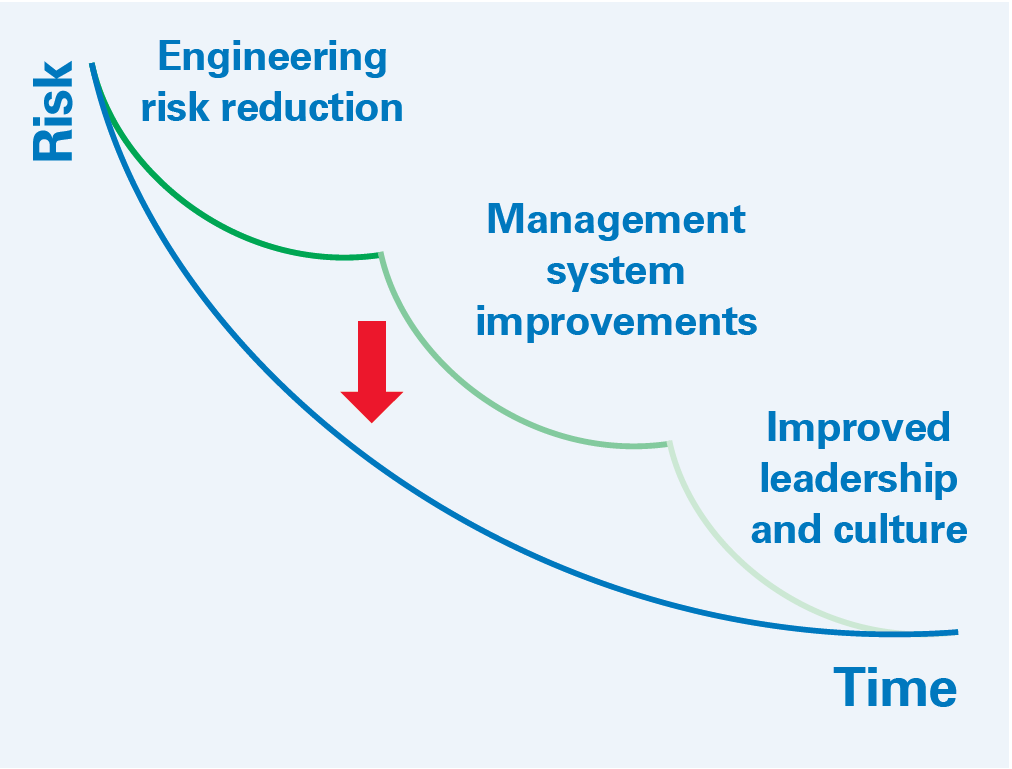
Figure 2 – A culturally-enabled approach
WHAT’S NEXT?

Looking to the immediate future, environmental factors are currently being considered more holistically under ‘sustainability’ along with social and economic factors. The United Nations (UN) has produced a 2030 Agenda for Sustainable Development and, in response, governments around the world are embedding sustainability into their wider objectives.
Many companies are publicly supporting the UN Sustainable Development Goals and drawing up and implementing sustainability plans.
It will not be long before the enhancement of organisational culture to incorporate sustainability will be a requirement for all organisations involved in the high hazard industries.
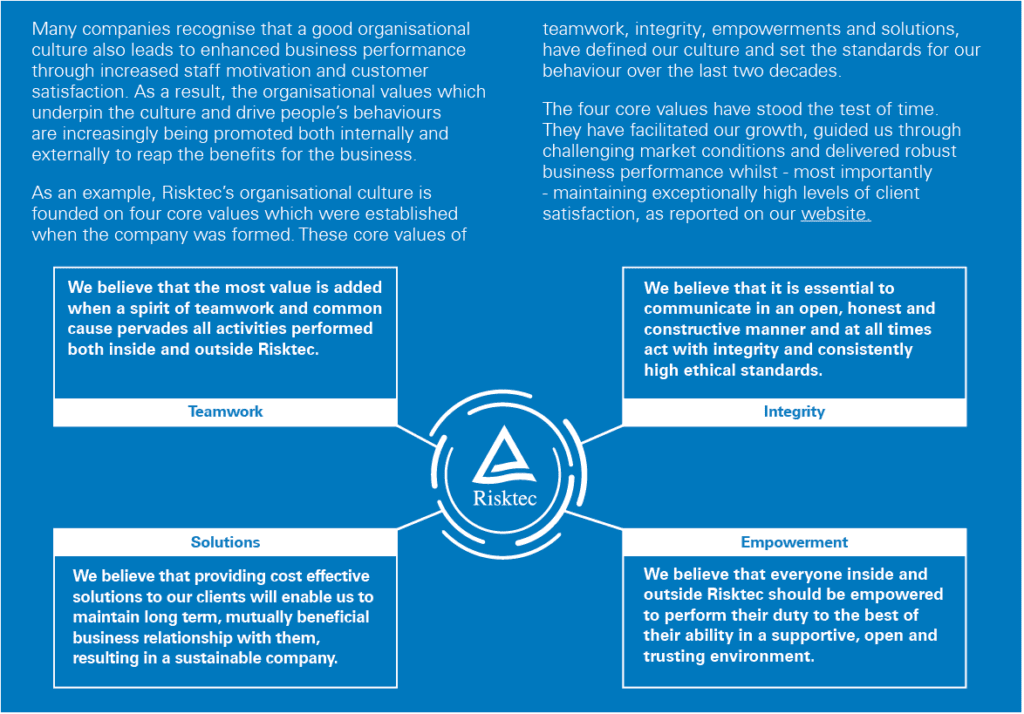
Box 1 – Case study: Organisational culture also enhances business performance
CONCLUSION
Society continues to be increasingly less trusting of high hazard sectors and is demanding ever more transparency in how major accidents will be prevented. Recognition that organisational culture is at the heart of managing risk has enabled organisations to take an integrated approach to demonstrating how health, safety, security and the environment are being managed.
With the global focus on sustainability and environmental, societal and governance (ESG) investing coming to a head, we can expect organisations to take a similar culturally-enabled approach.
This article first appeared in RISKworld 40, issued November 2021.

